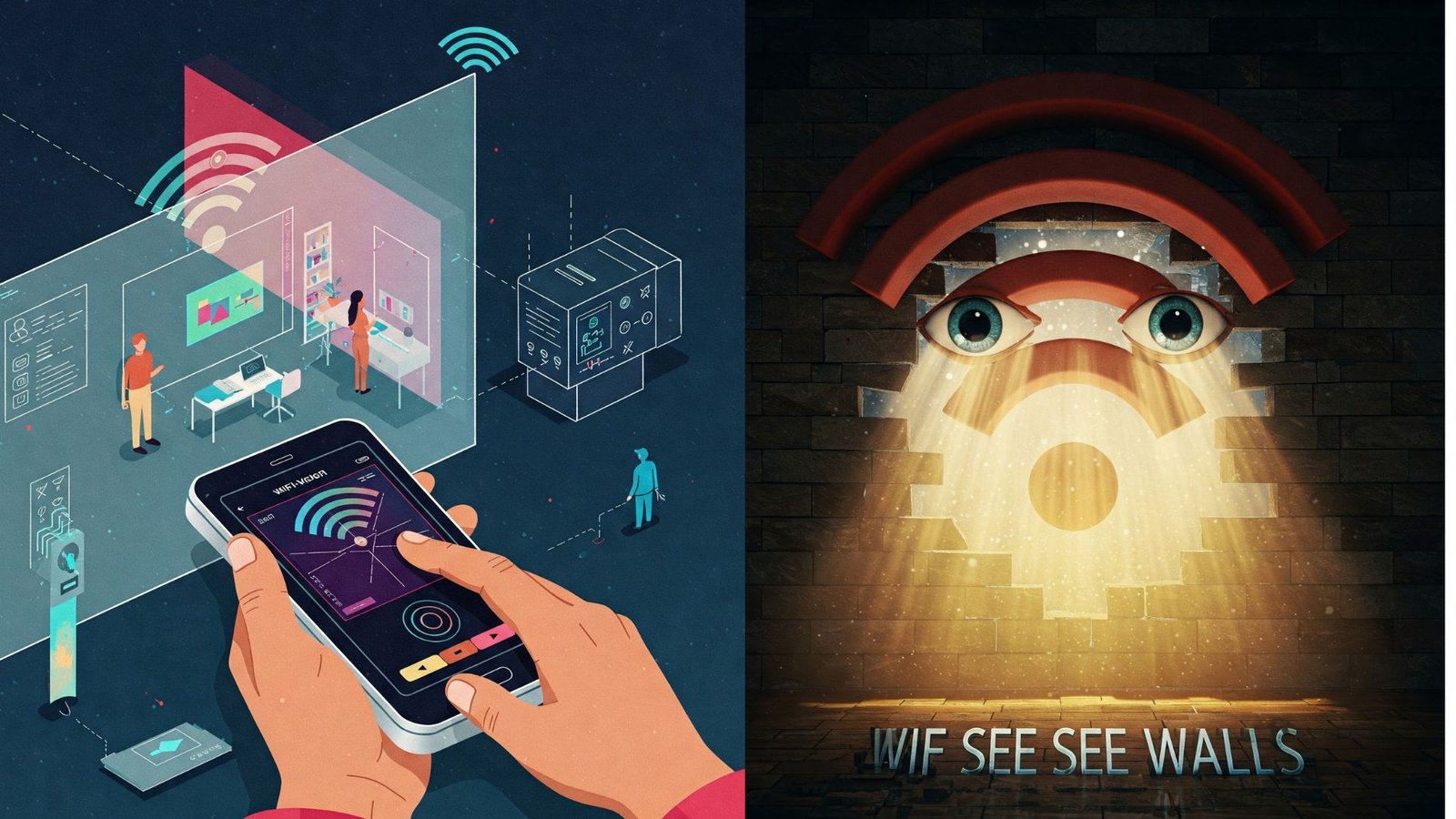WiFi signals can now see through walls detect movement and objects behind walls transforming ordinary routers into powerful sensing tools. By analyzing signal reflections, this technology enables contactless monitoring for healthcare, security, and smart homes. From tracking breathing patterns to detecting intruders, WiFi vision offers life-saving potential while raising critical privacy questions.
Imagine a world where your WiFi router doesn’t just provide internet it can see through walls, track movement, and even create rough images of objects inside a room. This isn’t science fiction; it’s Radio Frequency (RF) imaging, a breakthrough that turns Wi-Fi signals into a surveillance tool.
1. How Does Wi-Fi See Through Walls?

Wi-Fi signals (2.4GHz/5GHz) reflect off objects and humans, like radar. Sophisticated algorithms examine this disturbance in the signals to:
Spot movement (even breathing)
AI-enabled mmWave senses sub-1mm chest displacements to track breathing rates (12-30bpm) remotely through walls for contactless sleep studies and security notifications.
Map space layouts
AI-enabled mmWave scans chart real-time floor maps (5cm accuracy) remotely through walls for instant AR wayfinding and intelligent home automation without blueprints.
Detect objects (big furniture, humans)
AI-enabled mmWave sensors identify and distinguish between objects (furniture/humans) behind walls with 90%+ accuracy, powering smart homes and security systems.
MIT’s RF-Pose (2018) demonstrated this using AI to monitor human poses behind walls with Wi-Fi.
2. Key Applications
A. Security & Law Enforcement
- Search-and-rescue – Find survivors in fallen structures.
- Hostage situation – Detect movement without entry.
B. Healthcare
- Elderly fall detection – Watch over at-risk patients.
- Sleep tracking – Study breathing rhythms over the air.
C. Smart Homes
- Intrusion alarms – Break-ins detected without video.
- Gesture commands – Control devices with hand movements.
3. The Privacy Issue
Useful as this tech is, it poses real privacy concerns:
- Illicit eavesdropping – Hackers may take advantage of poor router security.
- Jurisprudential ambiguities – No straightforward legislation on RF surveillance.
- Business abuses – Could shops monitor where people go?
4. Future of Wi-Fi Imaging
Higher-resolution imaging (5G/6G mm Wave signals)
5G/6G mm Wave has an impact on ultra-HD imaging with precision below a millimeter. This causes a revolution in medical scans, security systems, and industrial inspections through high-frequency signal penetration.
Real-time 3D mapping for AR/VR
5G/6G mm Wave allows real-time 3D mapping to create AR/VR with precision below a millimeter. This creates instant digital twins of environments to play immersive games navigate and work together.
Medical diagnostics (remote detection of heartbeats)
5G/6G mm Wave makes it possible to detect heartbeats without contact (0.5mm accuracy) through walls up to 15m. This brings about big changes in how we keep an eye on patients from afar and diagnose emergencies.
Conclusion: A Double-Edged Sword
The success of this technology in the future depends on:
- Guardrail Technologies – Utilizing on-device processing and signal encryption to ensure misuse prevention
- Public-Private Dialogue – Developing regulatory frameworks that strike a balance between safety and privacy
Final Thought:
“In making the invisible visible, we need to be careful not to forfeit that which makes us human our right to privacy.”

